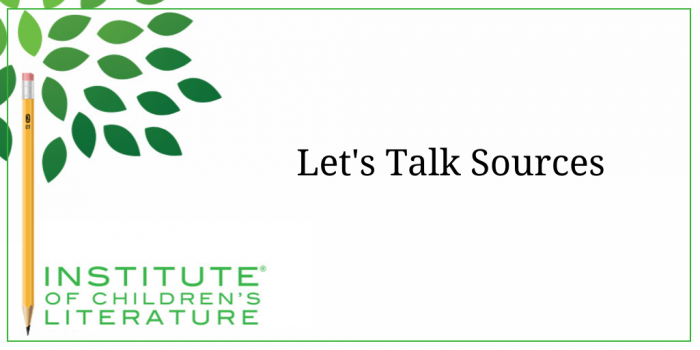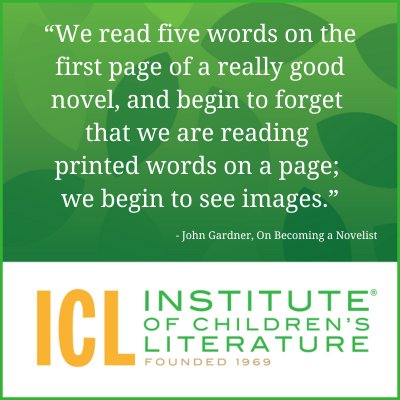1000 N. West Street #1200, Wilmington, DE 19801
© 2024 Direct Learning Systems, Inc. All rights reserved.

As a professional writer, I spend a lot of time thinking about sources. Whether I’m writing fiction or nonfiction, sources are important, because nothing feels worse than having a reader point out a factual error I should not have made.

All publishers love primary sources. But many writers are confused by what exactly makes something a primary source. For example, if I’m writing about the Revolutionary War, are all materials written during that time considered primary sources? Not necessarily. Here’s why. A primary source is one that had interacted directly with the information being passed on to you. For example, a letter written by George Washington about his experiences in the Revolutionary War would be a primary source. Washington was an actual participant in the war. A letter written about his experiences by him would therefore be a primary source.
How about a letter written by Martha where she describes an incident told to her by George about his war experience? Such a letter would certainly be old. It would be a contemporary source in that it was created at the same time period, but is it really primary? The question lies in whether Martha interacted directly with the war experience she’s reporting in her letter. If she did not, her letter would be a secondary source (but a really, really good one) because Martha didn’t interact with the experience directly, she got her information from a primary source (George).
Now, if I were writing about George and Martha (not about the war but about those two people) then her letter becomes a primary source, because it’s written by my subject and because she interacted directly with my other subject. So a source might be primary in some situations and secondary in others. What it boils down to is–did this person interact directly with the information I’m seeking?

A secondary source is one that interacted directly with a primary source and reported on it. If you’ll remember the imaginary Martha Washington letter I mentioned, it would be a secondary source about the war. A well-researched biography is often a secondary source because the writer will have read primary sources like letters and journals, and interviewed primary sources. The more primary sources that go into the secondary source, the more you can consider it a trustworthy and valuable source for research. Publishers actually like secondary sources because they’re often easier to fact check than something like an interview with a researcher. So secondary sources are also very good sources in the eyes of publishers.
 Lower Level Sources
Lower Level SourcesSome sources are basically just gathering information from secondary sources without ever coming into contact with a primary source. An article written based on encyclopedia entries and anonymous webpages would be depending upon extremely unreliable lower level sources. Just because something is published online or even published in a book does not make it accurate. Many times inaccurate statements are passed from source to source until they become generally believed. Much of the material found online is made up of low-level sources. This is why so many publishers shy away from Internet sources. However, this doesn’t mean there are no valuable sources online. In fact, museums are adding scanned primary sources to the Internet every day. But as a writer, it’s up to you to judge your sources carefully.
How can you tell if the source you’ve found is good or bad? First, a good source is authored. If you cannot find the name of the person who wrote the material you’ve found, you must assume you’re looking at a low level source. Now, some government published material is unauthored, but most material put out by government agencies that are tasked with studying and compiling data can be considered trustworthy. However, that doesn’t mean that statistics and references to studies that are made in speeches by elected officials should be considered accurate. Speeches are memorized and/or read and mistakes can enter the process. Also, speeches are often designed to convince the listener, so the motives behind the speech can color how the data is handled. So data in speeches should always be checked against solid sources.
Another way to judge the value of the source is to ask yourself if this source has any reason to lie or slant the information. For example, data about the healthfulness of automobile exhaust that is published by an automobile manufacturer should be held suspect. A report talking about the low risks associated with smoking cigarettes that is published by a tobacco company would be held suspect. Any time a source has a strong reason to need you to believe certain thing, that source’s information should be considered tainted by their need to convince.
Good sources can take time to find and effort to evaluate, but the end result is confidence in the accuracy of your writing and the knowledge that the things you say will reflect well on you. As with so many things in this profession, the most valuable things rarely come easy, but they’re well worth the effort.
With over 100 books in publication, Jan Fields writes both chapter books for children and mystery novels for adults. She’s also known for a variety of experiences teaching writing, from one session SCBWI events to lengthier Highlights Foundation workshops to these blog posts for the Institute of Children’s Literature. As a former ICL instructor, Jan enjoys equipping writers for success in whatever way she can.
1000 N. West Street #1200, Wilmington, DE 19801
© 2024 Direct Learning Systems, Inc. All rights reserved.
1000 N. West Street #1200, Wilmington, DE 19801
© 2024 Direct Learning Systems, Inc. All rights reserved.
1000 N. West Street #1200, Wilmington, DE 19801
© 2024 Direct Learning Systems, Inc. All rights reserved.
1000 N. West Street #1200, Wilmington, DE 19801
© 2025 Direct Learning Systems, Inc. All rights reserved.
1000 N. West Street #1200, Wilmington, DE 19801
©2025 Direct Learning Systems, Inc. All rights reserved. Privacy Policy.